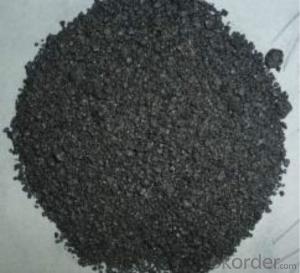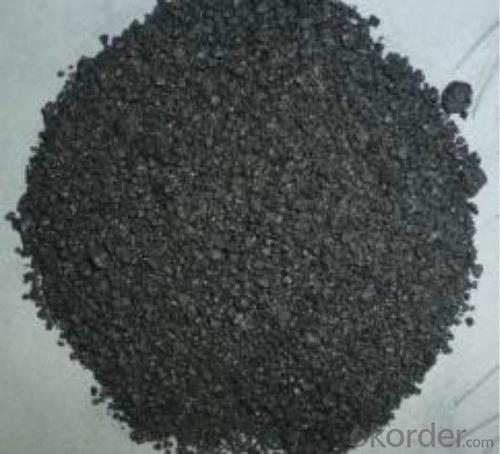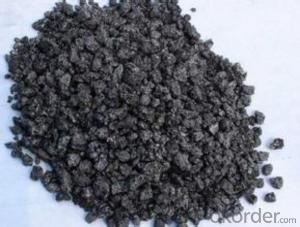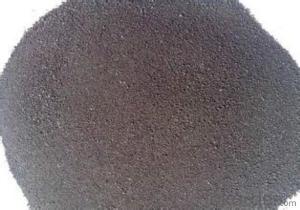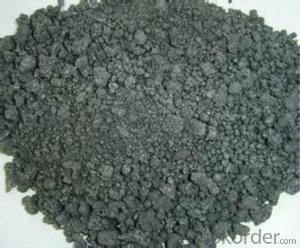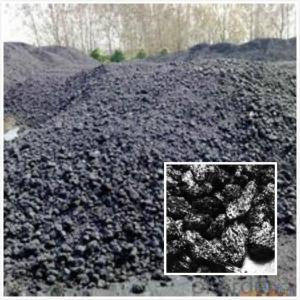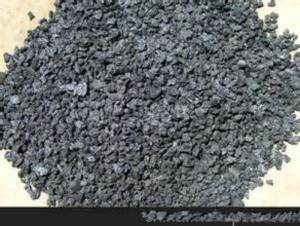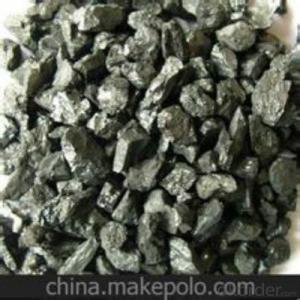FC 99% and Low SCalciend Petroleum Coke as Carbon additive
- Loading Port:
- Tianjin
- Payment Terms:
- TT OR LC
- Min Order Qty:
- 20.8
- Supply Capability:
- 2080 m.t./month
OKorder Service Pledge
OKorder Financial Service
You Might Also Like
Brief introduction
Calcined Petroleum Coke comes from delayed coke which extracted from oil refinery. Although Calcined Petroleum Coke contains a little bit higher level of sulfur and nitrogen than pitch coke, the price advantage still makes it widely used during steel-making and founding as a kind of carbon additive/carburant.
BaoSteel is world famous organization. This calcined petroleum coke's raw material is from Bao Steel, which has great quality guarantee. Bao Steel also named this coke as Pitch Coke.
Features
Our product has follwing advantages:
The morphology, chemistry and crystallinity of recarburisers
have a major impact on the overall casting cost. The combined
application and cost benefits, which are derived through the
use of Desulco, enable foundries to manufacture castings in a
highly cost effective manner.
reduces
Power consumption
Inoculant consumption
MgFeSi consumption
Furnace refractory wear
Scrap rate
Tap to tap time
Slag inclusions risk
Chill
It is playing more and more important role in the industry
increases
Casting microstructure
Productivity
Process consistency
Specifications
Products | CPC | ||
F.C.% | 98.5MIN | 98.5MIN | 98MIN |
ASH % | 0.8MAX | 0.8MAX | 1MAX |
V.M.% | 0.7 MAX | 0.7 MAX | 1 MAX |
SULFUR % | 0. 5MAX | 0. 7MAX | 1MAX |
MOISTURE % | 0.5MAX | 0.5MAX | 1MAX |
Pictures
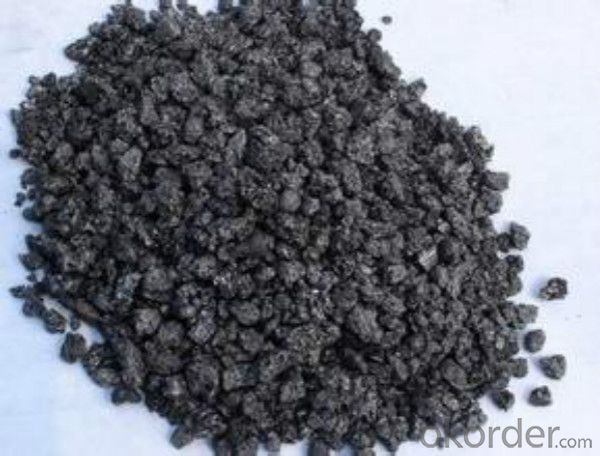
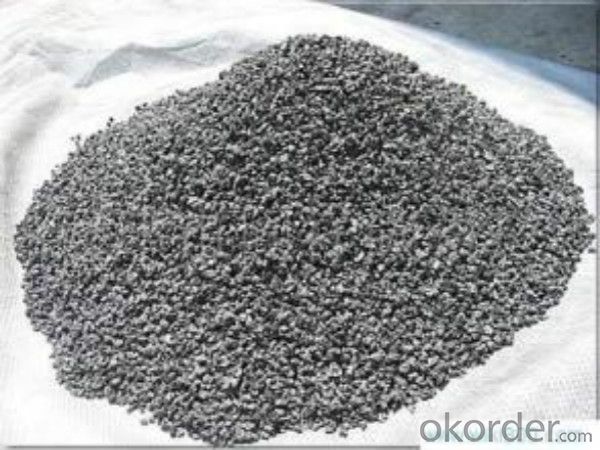
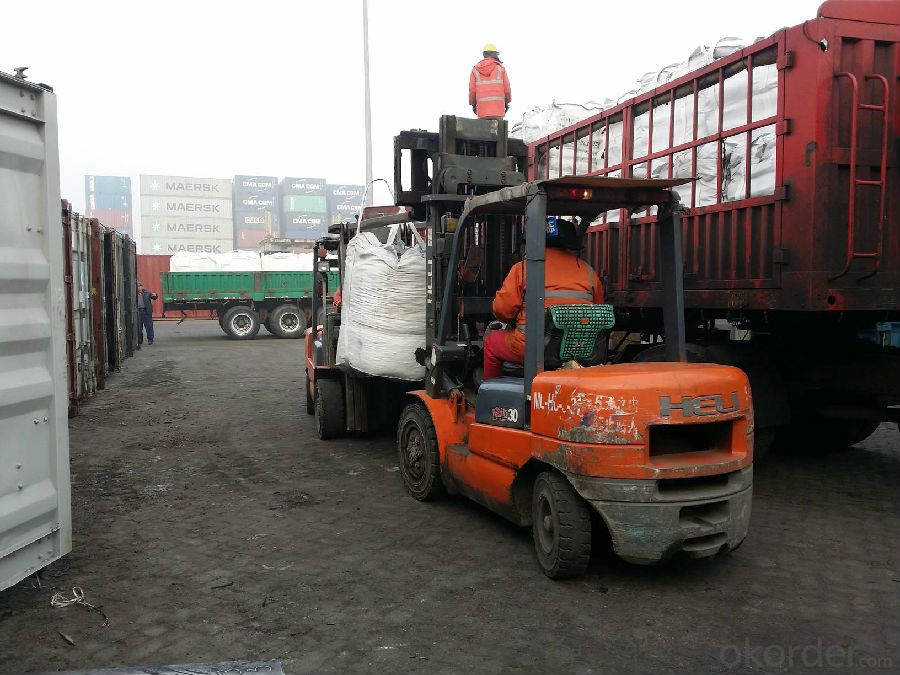
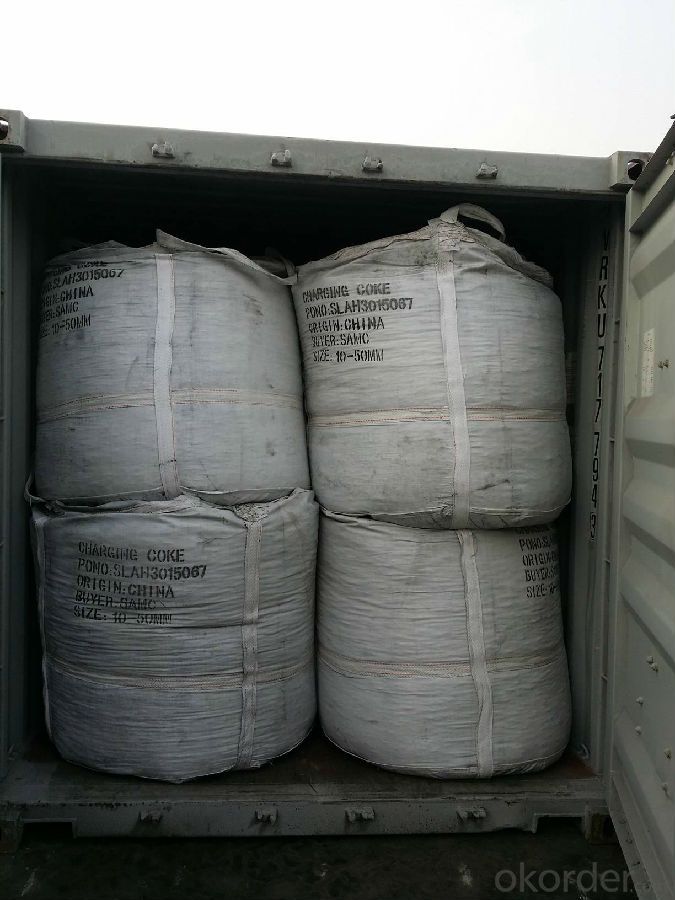
FAQ
1 What is the package?
In jumbo bag with/without pallet
2 What is the delivery time?
25 days after receiving the workable LC or down payment
3 What is the payment term?
T/T, L/C,D/P,D/A
- Q: What are the 3K, 12K, UD, etc. in the appearance requirements of the carbon fiber bicycle? What's the difference?
- 3K and "12K" refer to carbon fiber woven fabrics. 3K 12K cloth cloth texture is fine, coarse texture.UD is not imitation carbon fiber, refers to the polyethylene fiber woven fabric, the strength is lower than the carbon fiber, but the density is smaller than the carbon fiber, is often used to make bullet proof material.Carbon fiber and polyethylene fiber belong to high performance fiber.Advisory 181150695.
- Q: How does carbon dating work?
- Carbon dating works by measuring the amount of radioactive carbon-14 isotopes in organic materials, such as bones or wood. As living organisms absorb carbon-14 from the atmosphere, they maintain a constant ratio of carbon-14 to carbon-12. However, once an organism dies, it no longer takes in carbon-14, and the existing carbon-14 begins to decay at a known rate. By comparing the remaining carbon-14 with the known decay rate, scientists can determine how long ago the organism died, providing a reliable method for dating organic materials up to about 50,000 years old.
- Q: The printed document will be marked on the document name: carbon copy, no combination number, two links...... What's the meaning of this? What is the connection between the infinite and the two? I MMM
- Carbon free copy of a few, several refers to a few colors, that is, a few single! Is that a joint edge is what two of what is triple what you said and so on the boundless contact I estimate that he designer or boss tell you to explain things without Bian Lian refers to not say a contact department or (what) no Bian Lian case is a version of the paper change down on it, but the color edge contact is not the same a version of a few joint Bian Lian have changed several times I say you understand it?
- Q: How to identify a laptop shell is carbon fiber
- Carbon fiber, as its name suggests, is made from carbon fiber, so there are several characteristics. First, if it is not colored, you can see the obvious fiber. Second is black carbon color. And it's a lot more than ABS.
- Q: Why can carbon fiber in addition to static electricity ah?
- Carbon fiber is a conductive substance, static electricity can not accumulate. Therefore, in the production of cloth, some of the anti - static agent, processing clothes can be anti-static. People who work at gas stations must pass on antistatic clothing so that electrical sparks from static electricity do not explode.
- Q: How are fossil fuels formed from carbon?
- Fossil fuels are formed from carbon through a natural process that takes millions of years. When plants and organic matter die, they get buried under layers of sediment and undergo decomposition. Over time, intense heat and pressure from the Earth's crust transform this organic matter into fossil fuels such as coal, oil, and natural gas. These fuels contain stored energy in the form of carbon compounds, making them valuable sources of energy when burned.
- Q: How is carbon dating used to determine the age of fossils?
- Carbon dating is used to determine the age of fossils by measuring the amount of radioactive carbon-14 remaining in the fossil. Since carbon-14 decays at a predictable rate, scientists can estimate the age of the fossil by comparing the ratio of carbon-14 to stable carbon-12 isotopes. This method is most effective for fossils up to 50,000 years old.
- Q: What is carbon dioxide?
- Comprising carbon and oxygen atoms, carbon dioxide (CO2) is an odorless and colorless gas. Its formation stems from the combustion of fossil fuels, respiration, and volcanic activity. In the Earth's atmosphere, carbon dioxide serves as a crucial greenhouse gas, effectively trapping heat and impacting the planet's overall temperature. Although it occurs naturally, human actions, such as burning fossil fuels and deforestation, have significantly escalated its presence in the atmosphere, consequently leading to global warming and climate change. Additionally, carbon dioxide is a byproduct of diverse industrial processes, including cement production and power generation. Thus, reducing carbon dioxide emissions is paramount to mitigating the consequences of climate change and preserving a sustainable environment.
- Q: What are the consequences of increased carbon emissions on global food security?
- Global food security is significantly impacted by increased carbon emissions, with a range of consequences. One immediate effect is the alteration of weather patterns and an increase in extreme weather events, such as droughts, floods, and heatwaves. These events can result in crop failures, reduced agricultural productivity, and the loss of livestock, ultimately leading to food shortages and price instability. In addition, carbon emissions contribute to climate change, which causes long-term shifts in temperature and precipitation patterns. Higher temperatures can accelerate the growth and reproduction rates of pests and diseases, posing a severe threat to crops and livestock. Furthermore, changes in rainfall patterns can disrupt the timing and quantity of water available for irrigation, further reducing agricultural productivity. Moreover, carbon emissions contribute to ocean acidification, negatively impacting marine ecosystems and the livelihoods of fishing and aquaculture communities. This can result in a decline in fish stocks, jeopardizing an essential source of protein and nutrition for millions of people. Increased carbon emissions also lead to the loss of biodiversity. Climate change disrupts ecosystems, leading to the extinction or migration of plant and animal species. This loss of biodiversity reduces the resilience and adaptability of agricultural systems, making them more susceptible to pests, diseases, and environmental pressures. Ultimately, the consequences of increased carbon emissions on global food security are extensive and intricate. They include diminished agricultural productivity, rising food prices, food shortages, and limited access to nutritious food. Addressing carbon emissions and mitigating climate change is vital to ensure a sustainable and secure global food system for future generations.
- Q: How does carbon impact the prevalence of heatwaves?
- Carbon impacts the prevalence of heatwaves by contributing to the greenhouse effect. When carbon dioxide and other greenhouse gases are released into the atmosphere, they trap heat from the sun, leading to a rise in global temperatures. This increase in temperature makes heatwaves more frequent, intense, and longer-lasting, posing significant risks to human health, ecosystems, and infrastructure.
Send your message to us
FC 99% and Low SCalciend Petroleum Coke as Carbon additive
- Loading Port:
- Tianjin
- Payment Terms:
- TT OR LC
- Min Order Qty:
- 20.8
- Supply Capability:
- 2080 m.t./month
OKorder Service Pledge
OKorder Financial Service
Similar products
Hot products
Hot Searches
